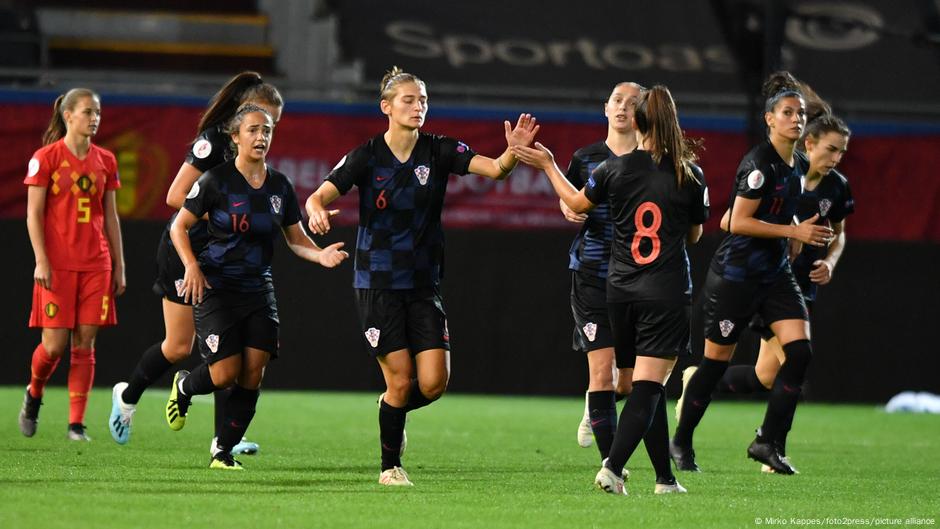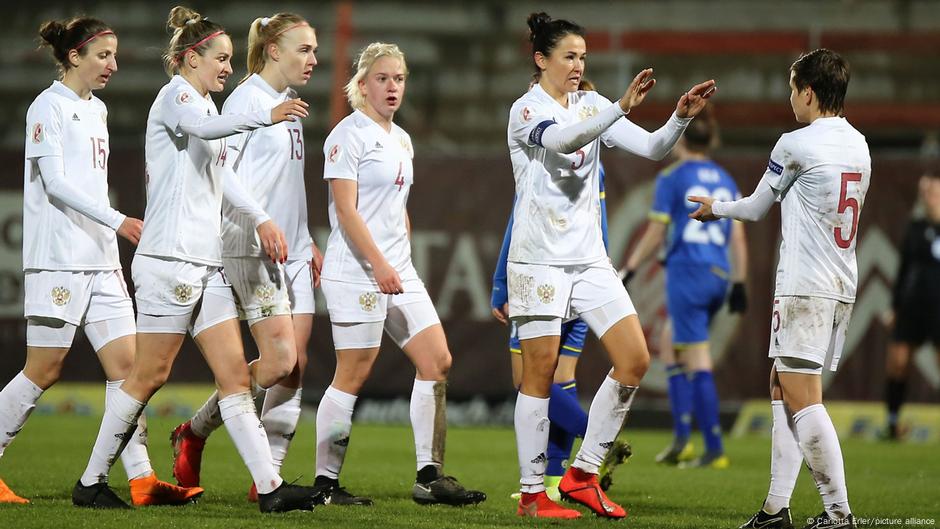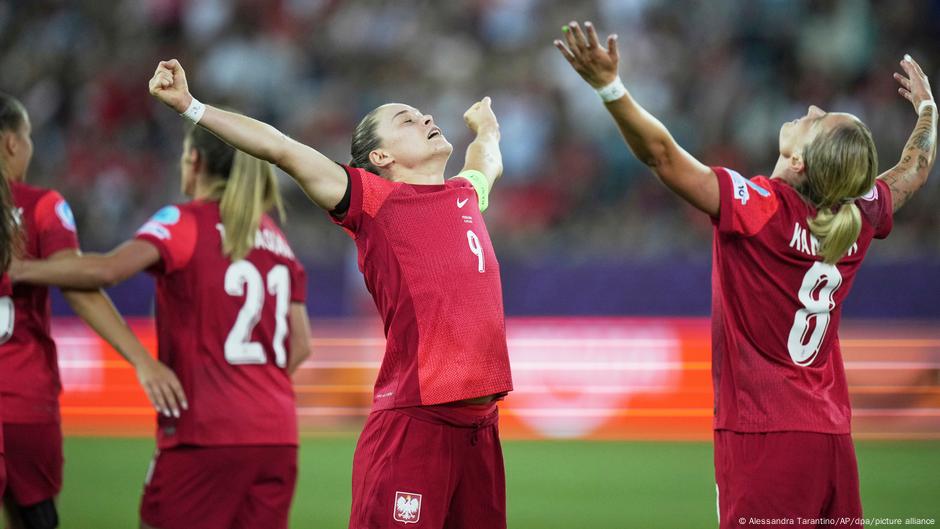Only a single team from Eastern Europe qualified for Euro 2025, and just three have ever reached any European Championship. In men’s football, the situation is different. So why has women’s football in the region had difficulty making an impact?
This goes beyond a competition; it represents a movement, and the reaction from throughout Europe and further demonstrates that women’s football is not just remaining – it is establishing the new benchmark.
These were the statements made by Nadine Kessler, a former German international player, who currently serves as UEFA’s women’s football director ahead of Euro 2025.
A significant portion of this seems indisputable: UEFA reports that they sold more tickets prior to the group stage starting than they did throughout Euro 2022, social media interactions have risen by 55% since then, and the prize fund has grown by 156% to €41 million ($47.5 million).
But, although Poland debuted at the EurosThis year, the movement has yet to spread to the rest of Eastern Europe and certain areas in Southern Europe. Although they won their last group match against Denmark, Poland was eliminated in the group stage, just like the other teams that have ever qualified from Eastern Europe (as per the United Nations definition) — Ukraine in 2009 and Russia, who made it five times between 1997 and their…banned from global soccer in 2022.
This is very different from men’s football, where 11 of the 24 teams at the most recent men’s Euros, held in Germany in 2024, came from the area, though they didn’t achieve significant success. Croatia (once again, considered part of Eastern Europe by the UN) was among these teams and reached the final of the 2018 World Cup.finalists in Qatar four years later.In contrast, their female athletes have still not managed to qualify for a World Cup or European Championship.
Goran Ljubojevic, the former coach and now sporting director of ZNK Osijek, a team that has won multiple titles in Croatia, mentioned that the region has consistently been behind, with clubs only beginning to establish women’s programs in the 1990s. He also noted that funding for women’s football has been limited. However, he thinks that social attitudes are also hindering the sport’s progress.
‘A man’s game’
“The cultural issue in our countries is that people believe girls should not play football and that they should mostly remain at home, becoming housewives or something similar,” he stated. The European Union’s Gender Equality index, released in 2024, supports this to some extent, as none of the eastern countries rank above the EU average.
I’m unsure if we’ll ever witness a change in the male mindset in Croatia, and whether this part of Europe will ever embrace women’s football at the same level as seen in Western Europe or the USA.

However, Ljubojevic, who played for NK Osijek (ZNK Osiek is the women’s part of the club) and Dinamo Zagreb, mentioned that witnessing full stadiums and significant enthusiasm for tournaments such as the Euros is making a difference in his native country and across the eastern and southern parts of the continent.
People witnessed the matches in the European Championship, they observed theWorld Cup in Australia[and New Zealand in 2023], they witnessed packed stadiums and thought ‘wow, I had no idea so many people follow women’s football, so there’s a change in their perspective. However, even with this, I believe the infrastructure is still not sufficient for women’s football to thrive here.’
Although ZNK Osijek is the most successful team in the country, they only attract around 300 fans for their home games. According to Ljubojevic, the potential exists, but it needs funding for coaching, facilities, and ensuring players earn enough to become full-time professionals.
Increasing budgets
The European Football Association has introduced new initiatives in the area over the past few years, and these are beginning to show results, as stated by Professor Dariusz Wojtaszyn from the University of Wroclaw in Poland.
“There have been numerous positive changes in recent years. These are fueled by the efforts of UEFA and local football associations, which – though gradually – are starting to acknowledge the potential of women’s football,” said the scholar, who has extensively written about women’s football in Eastern Europe.
Budgets for women’s football have risen substantially (often by over 100%) across all CEE [Central and Eastern European] nations. This is why I look upon UEFA’s efforts in a favorable light. They genuinely produce measurable outcomes.
In a written statement, UEFA mentioned that their updated competitions, such as the Champions League and Europa League, “have made sure that all competitions and final tournaments stay open and available to clubs and teams from every association. During this time, we have witnessed outstanding performances from eastern European clubs at the club, national team, and youth national team levels, and we will keep working with the relevant associations, just as we do with all our member associations, with the aim of enhancing performance and the growth of football across Europe.”
History and politics
However, Wojtaszyn believes that the politics in the region have been a hindrance. While the communist regimes that ruled many of these nations until the 1990s claimed to support gender equality, they in fact created a “paternalistic model of family and traditional social structures, which restricted opportunities for women’s liberation,” as stated by Wojtaszyn. The collapse of communism then further solidified these problems.
“The breakdown of the state funding system that was in place during earlier decades led to major economic challenges for football clubs. In these circumstances, women’s football, which attracted less attention, faced great difficulty in securing sponsors in the open market compared to its male counterparts. As a result, teams experienced financial difficulties, the playing fields were in very bad shape, and female players participated in amateur sports,” he said.
Recently, he added, the emergence ofright-wing political parties in nations such as Romania, Poland, Slovakia, and Hungary — along with a revival of “traditional” values that accompanied this — have rendered professional football less appealing to many women.

Despite his players still needing additional jobs to support themselves, Ljubojevic remains optimistic about the future, although he believes substantial investment and training are necessary.
See it to become it
We possess a vast pool of talent, similar to that in men’s football, but they haven’t been coached effectively,” he stated. “It will improve significantly in the coming years. I can assure you that we have exceptional talents, we have outstanding players, and [ZNK Osijek] is now operating at the highest level.
Poland hopes to witness an increase in involvement from their Euro campaign, with the national team’s head coach, Nina Patalon, forecasting a rise in female players from 30,000 to 300,000 following the tournament.
Ljubojevic believes that Croatia, and possibly other nations in the area, require something comparable to stimulate the development of women’s football.
Despite not being selected to host the 2025 event, and with no Eastern European nations submitting a bid for 2029, he hopes to see Croatia be the first country in his region to organize a competition.
Yes, we are capable of achieving it. However, we must approach it with seriousness. The federation, the nation, and all related aspects— they need to allocate funds and effort. Women’s football represents the emerging trend, and we must capitalize on this new wave. Yet, we have not done so yet.
Edited by: Chuck Penfold
Author: Matt Pearson







